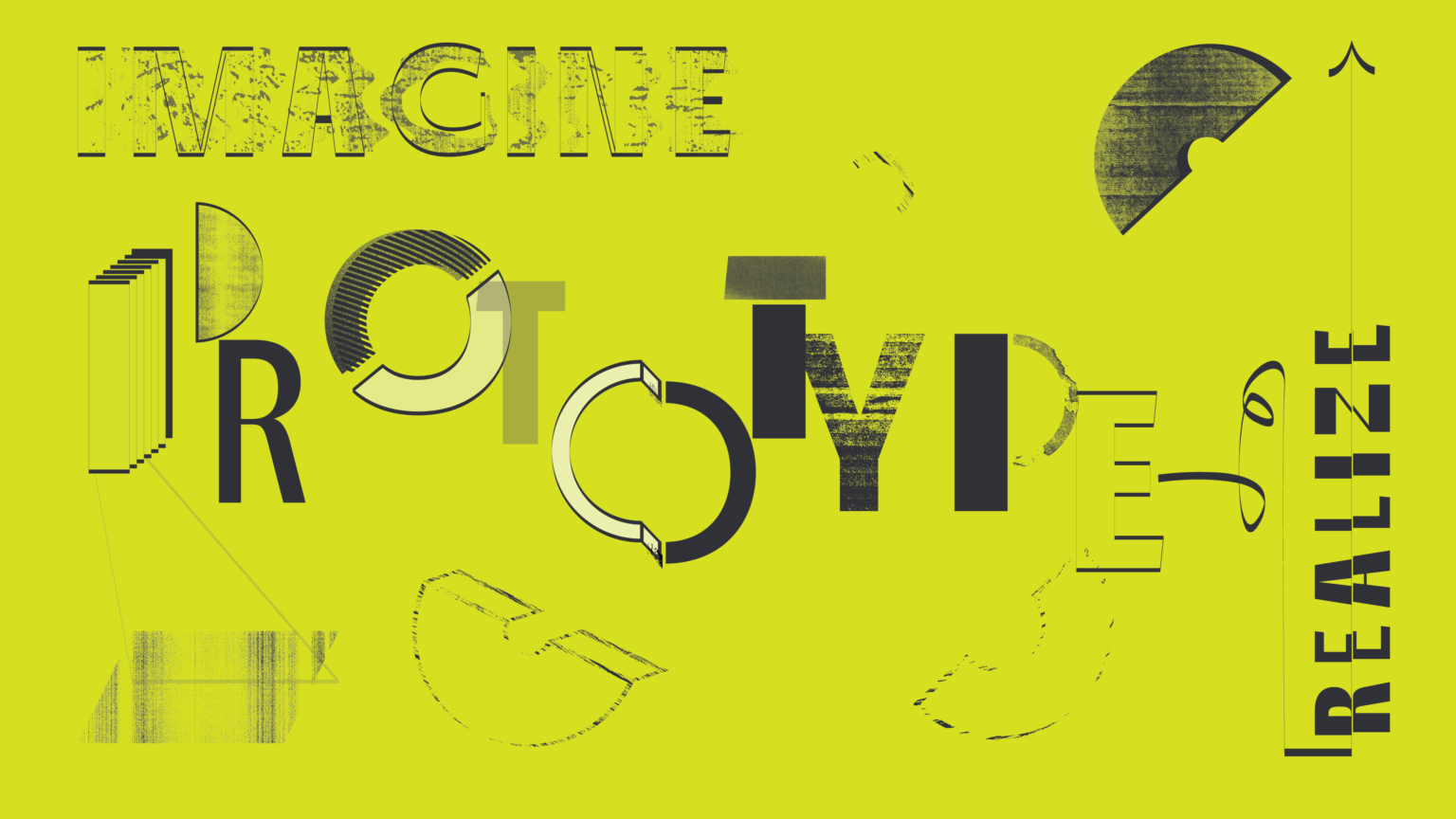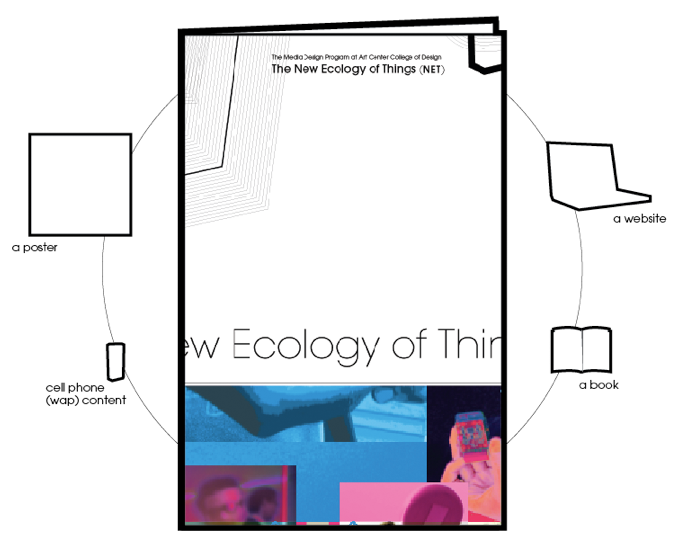
Phil van Allen helps imagine, prototype, and realize effective and creative AI driven products, services, ecosystems, and experiences. We co-invented Animistic Design, giving personality to AI by developing backstories, characters, and POVs.


Develop new directions with emerging technologies
Emerging technologies like AI have unexpected affordances, limits, ethical implications, and outcomes: to keep pace, you need provocative new visions, tools and methods.
IDEAS & EXPERIMENTS
AI implementations often miss the risks and opportunities. As technologies emerge and evolve, so too must design. Succeed through bold experimentation, critical reflection and challenging the default. Unlock the hidden value of your data and expertise with AI in ways that conventional approaches can't.

Your organization can embrace:
-
CRITICAL PROTOTYPING
 Think through making by sketching prototypes, critically reflecting, and producing new product visions (read more about critical prototyping)
Think through making by sketching prototypes, critically reflecting, and producing new product visions (read more about critical prototyping) -
STRATEGY AND ETHICS
 Define an ethical strategy for AI that aligns with your brand, values, and mission, while avoiding risky outcomes
Define an ethical strategy for AI that aligns with your brand, values, and mission, while avoiding risky outcomes -
FORESIGHT & INSIGHT
 Adapt your plans to emerging technology and trends to invent more successful futures
Adapt your plans to emerging technology and trends to invent more successful futures -
TRAINING & WORKSHOPS
 Equip your creatives, staff, and management with the right expertise to take advantage of AI to make more effective products and services
Equip your creatives, staff, and management with the right expertise to take advantage of AI to make more effective products and services -
CUSTOM TOOLS

Develop custom tools for your AI workflows that increase productivity, speed prototyping, and help with best practices
-
NEW OPPORTUNITIES

Develop creative, valuable, and unexpected ways of applying new technologies in your next key initiative

![]()
Still thinking about @philvanallen's new, great #AI-for-#UX-designers toolkit: http://philvanallen.com/portfolio/delft-ai-toolkit/… (think: Lego Mindstorms for AI w/wizard of Oz puppeting as a key component of the workflow)
As designers move from the #design of individual things to complex ecologies of smart things, some older conceptions that influenced the development of #AI may have renewed relevance https://hubs.ly/H0fYHwl0 @mikekuniavsky, @xeeliz and @philvanallen detail in @interactionsMag

“One of the things we have to think about designing for AI is people’s perceptions of AI (i.e. Smart, Social, Inuitive, Alive) In fact, AI is quite dumb. It’s the exact opposite of what people think it is (i.e. Kinda Smart, One POV, Awkward, Very limited, Not alive).” @philvanallen #dwpdx
Artificial Intelligence: “It has to be a designed artifact not just a tech artifact.” @philvanallen Thank you @JLRIncubator for the discussion as part of @DesignWeekPDX.
FROM THE BLOG...

Phil van Allen has 20+ years of experience with technology, media, innovation, and research

Design & AI Symposia
In 2022, 2023 and 2024 Phil co-produced the premier symposium on Design & AI in Europe. These sold out events […]

Designing Smart Objects in Everyday Life
Designing Smart Objects in Everyday Life Phil contributed a chapter called Sketching and Prototyping Smart Objects ISBN: 9781350160125

Big Data. Big Design
Big Data. Big Design Why Designers Should Care About Machine Learning – Phil contributed an essay called Animistic Design ISBN: 9781616899158

Post-Skeuomorphic AI Symposium
What are the new design principles, metaphors and challenges that are part of AI as a design material? How can […]

“Useless AI” Symposium
This symposium was hosted at the Media Design Practices MFA program at ArtCenter College of Design. It was curated by […]

Infiniti Interactive Mirror
An installation for Infiniti at the International Auto Show (Detroit, Chicago, NYC, , the Infiniti Interactive Mirror is a 3 screen […]

The New Ecology of Things
The New Ecology of Things publication was a research initiative that explored emerging forms of interactive communication brought about by […]

Acura – Race Your Heart Out
RACE YOUR HEART OUT An award-winning digital and social campaign for Acura’s winter sales event. This project was a fun […]

Reimagining the Goals and Methods of UX for ML/AI
This article was presented as part of the 2017 Spring AAAI Symposium at Standford University – It challenges UX conventions […]

Articles for ACM Interactions Magazine
Special Topic: Designing AI – As part of the AAAI Symposia series (2017–2018), Elizabeth Churchill (Google), Molly Steenson (CMU), Mike […]

Critical Prototyping – A New Approach
This article defines a new approach for prototyping that’s appropriate for designing with new technologies like AI and XR. Critical […]

Animistic Collaborators in Mixed Reality
This project explored how virtual, AI based, non-anthropomorphic animistic entities could work as colleagues and collaborators in Mixed Reality, especially in […]

Delft AI Toolkit
The Delft AI Toolkit is a system for designing and researching smart things.
FAQ
What are your services?
We help our clients succeed with AI and other advanced technologies. We consult on strategy, foresight, prototyping, and design. Contact Us
What is AI?
We think of AI as Augmented Intelligence. While understanding the potential problems with AI, we believe in using data, design and computation to make humans and organizations smarter.
How do you see foresight?
In a dynamic dialog with Commotion AI, we'll examine your organization to discover how future trends in AI may affect your planning.
How do you approach Strategy and Ethics?
Ethics are key consideration when developing AI driven products or services. Data collection and analysis by AI creates a high potential for invasion of privacy, security risks, bias, discrimination, and the unwanted commercial exploitation of our personal data/activities. A thoughtful strategy for AI that is aligned with your values and mission needs to be developed.
Ethics Further discussion
AI Errors: Machine learning depends heavily on being trained on examples, and if the example data is bad or mislabeled, the system can make serious mistakes such as the infamous "gorilla" problem with Google Photos. For example, Google Photos uses AI to tell you who or what is in your photos. But in a horrible example of racism that comes from naive design, poor hiring practices, bad data, and inadequate testing, the system started identifying black people as gorillas.
Unintended Bias: AI can unintentionally reproduce the biases of the designers, organizations, cultures that are the context for creating the system. AI can help reduce bias, but it can also bake in and scale bias — Machine learning depends heavily on being trained on examples, and if the example data is bad or mislabeled, the system can make serious mistakes.
Surveillance: AI can be used to track people both online and IRL, and this tracking info must be secured by the organization responsible for the data (e.g. home security/automation vendors). Another area of concern is facial recognition in public areas, which can be used to identify where specific people are without their permission. For example, a company (Clearview.ai) is currently compiling photos from social media for facial recognition, and selling an app to police, governments, and others so they can identify people within seconds of capturing a photo.
Privacy: AI can notice very subtle patterns, and by analyzing them can reveal private information. For example, a high school student who shopped at Target started receiving pregnancy related marketing before she had told her parents she was pregnant. This is a classic case of unintended consequences, where the sending of marketing materials both revealed private information and made people feel creepy.
Labor disruption: While AI has the potential to increase satisfaction and decrease the drudgery of work, it also can replace existing workers. For example, autonomous freight trucks may put some truck drivers out of work. Workers may also feel like their skills are not being utilized well when they must follow what an AI system instructs them on what to do. For example, some delivery workers who have to follow AI created directions are unhappy they can't use the navigating skills and knowledge that they are proud of. These problems for workers are not limited to physical labor, but can indeed affect so-called knowledge workers and their job satisfaction and performance.
Do you offer training and workshops?
Yes. We can increase your team's effectiveness through hands-on workshops on the essentials of AI and its design.
Who is Philip van Allen?
Phil is a long-time innovator, researcher and expert in the design of new technologies. He is a maker, writer, speaker, educator, and expert at the intersection of AI, IoT, media, data, and the new ecologies these create. Working in a range of platforms and scales, he discovers new approaches and possibilities, bringing them to life in effective, ethical and surprising ways. He has experience in startup, corporate, entertainment, and research contexts. Phil has co-organized the European Design & AI Symposium for the last three years. He has an extensive network in the worlds of design and AI. For more details, interact with Phil’s AI assistant at commotion.ai.
Who are past clients of Phil's?
Philips, TU Delft, Nestlé, Infiniti, Acura, Razorfish, George P Johnson, Launch Magazine/Yahoo, The Huntington Art Collections, USC Rossier School of Education, Interval Research, U2, Yoko Ono
CONTACT US
To discuss working with us, please fill out the form